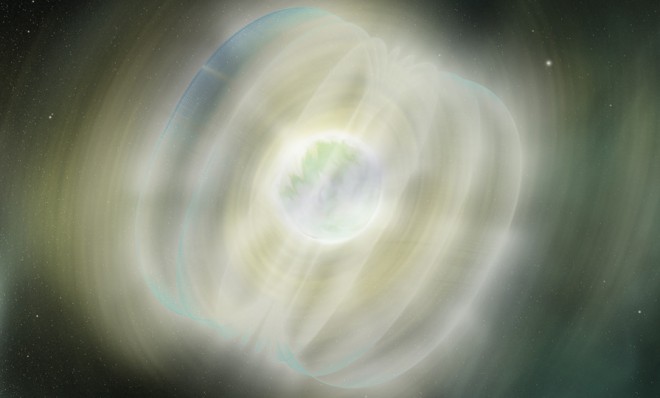The mysterious intergalactic radio bursts that release as much energy as the sun
Black holes? Colliding stars? Scientists are puzzled by what is sending the powerful waves across the universe

Astronomers have been puzzled by powerful radio-wave bursts that appear for only a few milliseconds, but emit as much energy as the sun does over the course of 300,000 years.
What could create that much energy? According to a new study published in Science, one likely candidate is a neutron star collapsing into a black hole, an event recently dubbed a blitzar.
"When the black hole forms, the magnetic field will be cut off from the star and snap like rubber bands," explains astronomer Heino Falcke in New Scientist.
The Week
Escape your echo chamber. Get the facts behind the news, plus analysis from multiple perspectives.

Sign up for The Week's Free Newsletters
From our morning news briefing to a weekly Good News Newsletter, get the best of The Week delivered directly to your inbox.
From our morning news briefing to a weekly Good News Newsletter, get the best of The Week delivered directly to your inbox.
Another leading theory is that the radio-wave bursts come from magnetars, which are highly magnetic neutron stars.
The waves could also be caused by two colliding neutron stars, evaporating black holes, or an entirely new type of astrophysical event, according to James Cordes, an astronomer at Cornell University.
The intense bursts were first discovered six years ago. Recently, astronomers found four of them while sweeping the sky with the Parkes radio telescope in New South Wales, Australia.
The resulting study now concludes that they are probably common occurrences, appearing as often as every 10 seconds. Despite the fact that these bursts appear all the time, only six of them have been observed.
A free daily email with the biggest news stories of the day – and the best features from TheWeek.com
That is because telescopes can only observe small patches of sky, meaning “you have to look for a long time before seeing many,” Dan Thornton, an astronomer at the University of Manchester, tells Discovery. “This is why we have only detected a handful so far.”
Unlike most radio waves we detect, these came from beyond our Milky Way galaxy, originating between six billion and nine billion years ago. That would make them around half as old as the universe itself.
Scientists are hoping that the radio-wave bursts can help shed light on what kind of gas fills the gaps between galaxies.
Keith Wagstaff is a staff writer at TheWeek.com covering politics and current events. He has previously written for such publications as TIME, Details, VICE, and the Village Voice.
-
 Metaverse: Zuckerberg quits his virtual obsession
Metaverse: Zuckerberg quits his virtual obsessionFeature The tech mogul’s vision for virtual worlds inhabited by millions of users was clearly a flop
-
 Frank Gehry: the architect who made buildings flow like water
Frank Gehry: the architect who made buildings flow like waterFeature The revered building master died at the age of 96
-
 Is MAGA melting down?
Is MAGA melting down?Today's Big Question Candace Owens, Tucker Carlson, Laura Loomer and more are feuding